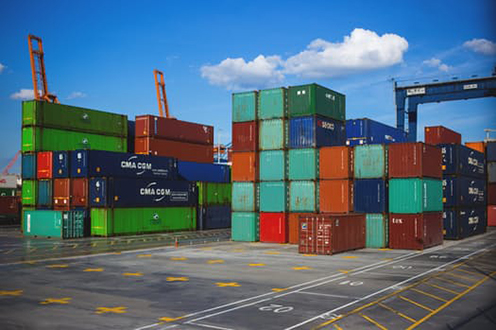Foreign trade report, January-November 2016
Exports hit new all-time high and trade deficit shrinks by 27.1%
News - 2017.1.19
Imports fell by 0.9% to 250.11 billion euros. The trade deficit stood at 16.31 billion euros, 27.1% less than the figure recorded in January-November 2015 and the second best cumulative balance for 11 straight months since 1997, only bettered in 2013. Spanish exports performed better than those in the Eurozone and the European Union.
The coverage rate - exports over imports - stood at 93.5% (versus 93.3% in January-November 2015), the second best figure after 2013 on record, dating back to 1962.
In volume terms exports increased by 3.6% due to prices falling by 1.9%. Meanwhile, imports grew by 2.8%, since prices measured by Unit Value Indices fell by 3.6%.
The non-energy balance posted a deficit of 1.61 billion euros (versus a surplus of 2.12 billion euros in January-November 2015) and the energy deficit shrank by 40%.
The positive performance of Spanish exports between January and November is in contrast to that of Spain's neighbours; in the Eurozone, exports increased slightly (0.2%) while in the European Union as a whole exports shrank by 0.6%. Exports were up in Germany (0.8%) and Italy (0.7%), but less so than in Spain, and were down in France (-1.8%) and the United Kingdom (-1.5%), as well as in the USA (-4%), China (-6.4%), and Japan (-8.5%).
Economic sectors
The main economic sectors showed export growth. Exports of capital goods (accounting for 20.2% of the total) grew by 2.9%, while automotive sector exports (18% of the total) increased by 7.1%, and food, drink and tobacco exports (16.7% of the total) grew by 6.1%.
With regard to imports, the consolidation of the recovery of the Spanish economy is driving growth in most sectors. Capital goods imports (21.7% of the total) grew by 7.1%, automotive sector imports (13.8% of the total) increased by 4.1%, while imports of consumer manufactures (+6.8%), food, drink and tobacco (+4.1%), and consumer durables (+8.6%) all grew.
Geographic areas
Exports to the EU (66.5% of the total) grew by 4% in the first eleven months of the year. Sales to the Eurozone (51.9% of the total) increased by 4.2% while exports to the rest of the EU (14.6% of the total) grew by 3.3%.
The unfavourable trade cycle in emerging countries caused exports to third countries (33.5% of the total) to fall by 2.8%. Exports to North America (-1.1%), Latin America (-9.9%), the Middle East (-4.5%), Africa (-0.4%) and Oceania (-19%) all declined. However, exports to Asia excluding the Middle East (3.5%) grew. Despite the general scenario, sales to such high potential markets as Canada (8.4%), China (12.8%), Hong Kong (9.2%) and Morocco (13.7%) increased.
The regional communities posting the strongest export growth were Castile and Leon (+9.1%), Castile-La Mancha (+7.3%), and Galicia (+6.1%). The greatest decreases were recorded in the Canary Islands (-16%), Asturias (-10.8%) and Murcia (-3.5%).
Figures for November
 Ministerio de Economía y CompetitividadIn November, Spanish exports of goods increased by 8.5% on the same month in 2015 to 23.51 billion euros. In volume terms, growth was 9.3%. Imports grew by 5.3% to 24.75 billion euros, and in volume terms growth was 7%. This left the deficit in November 2016 at 1.25 billion euros, 32.6% less than in the same month of 2015. The coverage rate stood at 95%, 2.9 percentage points more than in November 2015.
Ministerio de Economía y CompetitividadIn November, Spanish exports of goods increased by 8.5% on the same month in 2015 to 23.51 billion euros. In volume terms, growth was 9.3%. Imports grew by 5.3% to 24.75 billion euros, and in volume terms growth was 7%. This left the deficit in November 2016 at 1.25 billion euros, 32.6% less than in the same month of 2015. The coverage rate stood at 95%, 2.9 percentage points more than in November 2015.
In November, the Spanish export sector performed better than that of the Eurozone (5.7%) or of the EU (4.9%).
The non-energy balance posted a surplus of 192 million euros (versus a deficit of 41 million euros in November 2015) and the energy deficit shrank by 20.4%.
Economic sectors
In November, the main contributions to export growth were made by capital goods (a contribution of 3.2 points), energy products (2 points), food, drink and tobacco (1.3 points), consumer manufactures (1 point), the automotive sector (0.8 points,) and chemical products (0.8 points). The only sector with a negative contribution was other goods (-1.3 points).
Geographic areas
In November 2016, exports to the EU accounted for 67.7% of the total (versus 66.3% in November 2015), an 11% year-on-year increase. Exports to the Eurozone grew by 13.9% while those to the rest of the EU increased by 0.8%. With regard to Spain's main trade partners, we would highlight increased sales to France (+16.9%), Germany (+15.4%), and Italy (+13.8%), while exports to the United Kingdom shrank (-0.9%).
Sales to non-European Union countries accounted for 32.3% of the total (versus 33.7% in November 2015), up by 3.8% compared with the same month of the previous year. By region, sales grew in North America (+8.4%), Latin America (+4.7%), Asia excluding the Middle East (+0.5%), the Middle East (+7.1%), and Africa (+6.1%). The only exception was Oceania (-8.2%), despite the increase of sales to Australia (+5.5%). By individual countries we would highlight increased sales to Canada (+19.9%), USA (+7.1%), Mexico (+21.6%), China (+12.3%), Hong Kong (+19.8%), and India (+15.7%), and lower sales to Brazil (-12.8%), Argentina (-10.4%), Chile (-10%), Japan (-16.3%), and South Korea (-33.5%).
Spain's trade surplus with the EU stood at 1.71 billion euros in November 2016 (versus 554 million euros in November 2015). The trade balance with the Eurozone posted a surplus of 1.2 billion euros (versus 129 million euros in the same month of the previous year). Meanwhile, the trade deficit with non-EU countries increased by 23% compared with November 2015, to 2.96 billion euros.
The full report, with tables, may be consulted on the website of the Ministry of Economy, Industry and Competitiveness.





